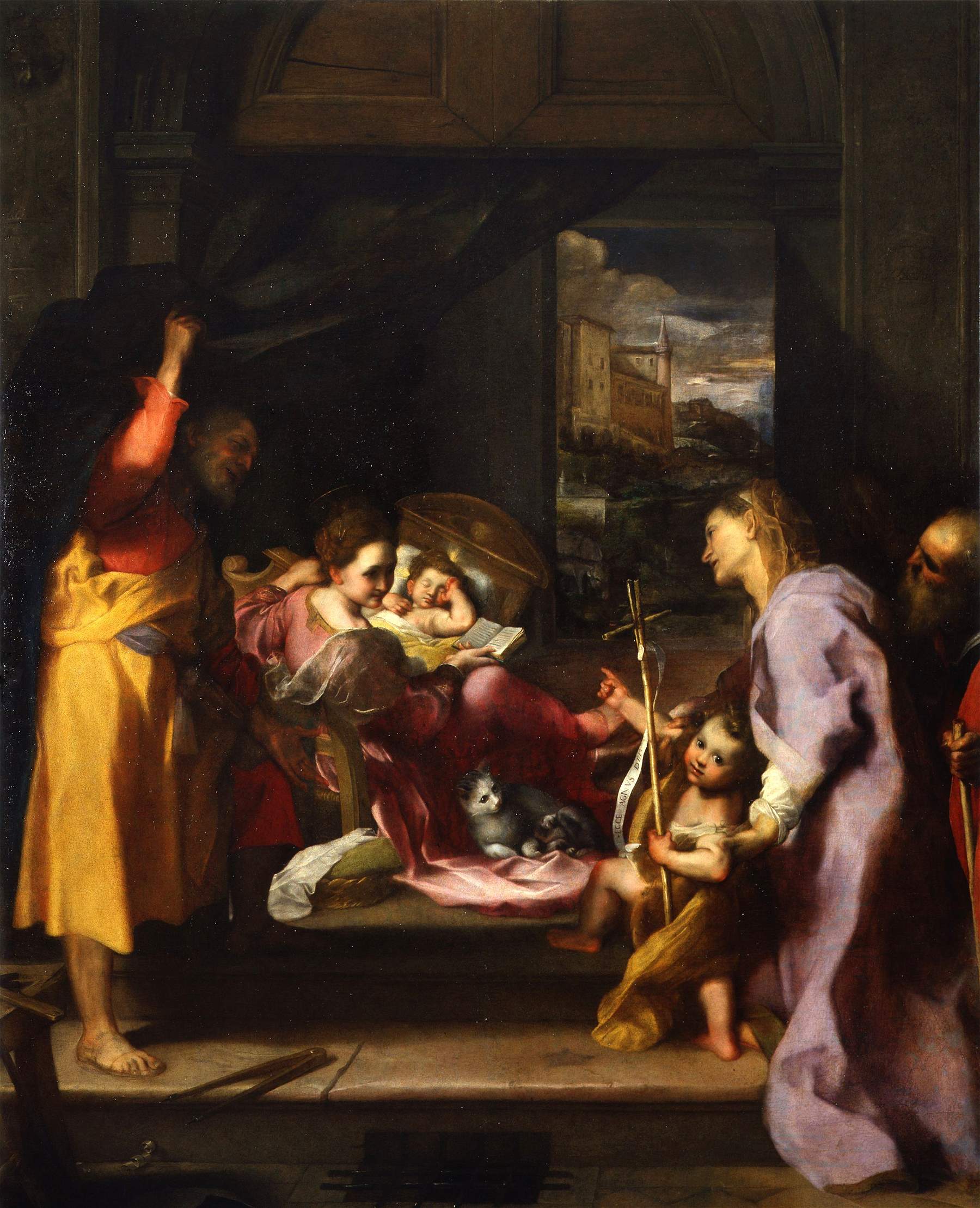The Madonna of the Cat, a masterpiece by Federico Barocci, leaves Uffizi storerooms and returns to view
One of the most beautiful and famous paintings by Federico Barocci (Urbino, 1535 - 1612), the Madonna of the Cat, has come out of the Uffizi Gallery storerooms and is back on view again, after more than a decade of absence, at the Pitti Palace. Barocci’s masterpiece, made around 1598, will be placed in a new location, in the Sala di Berenice, where it will find space along with other works by Barocci rearranged for the occasion in the same room (these are the Ritratto di fanciullo and the coeval copy from theAnnunciazione). The canvas remained in Urbino, Barocci’s homeland, until 1631, when it moved to Florence along with the estate of Vittoria della Rovere, who had married very young (when she was only eleven years old) to Grand Duke Ferdinando II de’ Medici, twelve years her senior. Originally the Madonna della Gatta (named for the presence of the animal) was placed in Vittoria della Rovere’s winter apartment on the second floor of the Pitti Palace, where it is now on display again.
The work, among Barocci’s most prized, was the subject of numerous copies, most notably the sumptuous tapestry executed in 1663-1664 by Pietro Fevère on commission by the grand duchess herself, and preserved in the Royal Apartments of the Pitti Palace. Two other important works by Barocci have recently returned to the exhibition after a long period in storage, in this case at the Uffizi: these are the monumental Madonna del Popolo altarpiece and the Noli me tangere, both now housed in the Sala del Pilastro, one of the main spaces among those recently inaugurated and dedicated to 16th-century painting, which we told you about in this article.
“What the painter imagined for this painting, executed around 1598,” explains Anna Bisceglia, curator of 16th-century painting at the Uffizi Galleries, “is one of the most delicate and theatrical interpretations of motherhood. Joseph lifts the curtain and immediately introduces the viewer into the domestic walls, where the Virgin is cradling her child. The special feature from which the painting gets its name is precisely the cat nursing her kittens, placed by the painter right in the center of the scene, softly snuggled between Mary’s robes. It is a detail that has the capacity to project at once the sacred image into an everyday, true dimension of simple affections and motions of the soul that the viewer feels close to him or her and that induce him or her to feel part of that gentle dialogue of looks and gestures. And it is precisely in this extraordinary ability to bring together an accessible sentimentality, expressed with a clear and immediate representation, with the elegance of a highly refined pictorial matter that Barocci reveals himself to be the extraordinary protagonist of a season of transition, one that takes up the legacy of great Mannerist painting and launches it decisively into the Baroque universe.”
“The great return of the Madonna of the Cat,” declares instead Eike D. Schmidt, director of the Uffizi Galleries, “is part of the strategy of enhancing Palazzo Pitti more by bringing back masterpieces that in the past were exhibited there but were later transported to other museums and sometimes ended up in storage. The new display in the Berenice room makes clear the importance of Federico Barocci’s style for seventeenth-century painting, an element that is particularly noticeable thanks to the display alongside Luca Giordano’s Adoration of the Magi and also the presence of seventeenth-century paintings from the Florentine school. It is a composition of works that enhances Barocci’s color choices, the abstract articulation of his draperies, and the sense of atmospheric nuances that were fundamental to the painting of the following century. Therefore, it can be said that the placement in diachronic perspective of the Madonna della Gatta in the Palazzo Pitti, is complementary to the arrangement of the Madonna del Popolo and the Noli me tangere in the Uffizi’s Sala del Pilastro, where the two masterpieces by the Urbino master are part of the polyphonic chant of paintings of Counter-Reformation painting organized in a synchronic manner.”
Pictured: Federico Barocci, Madonna of the Cat (c. 1598; oil on canvas, 233 x 179 cm; Florence, Palatine Gallery, Palazzo Pitti)
 |
| The Madonna of the Cat, a masterpiece by Federico Barocci, leaves Uffizi storerooms and returns to view |
Warning: the translation into English of the original Italian article was created using automatic tools. We undertake to review all articles, but we do not guarantee the total absence of inaccuracies in the translation due to the program. You can find the original by clicking on the ITA button. If you find any mistake,please contact us.




























